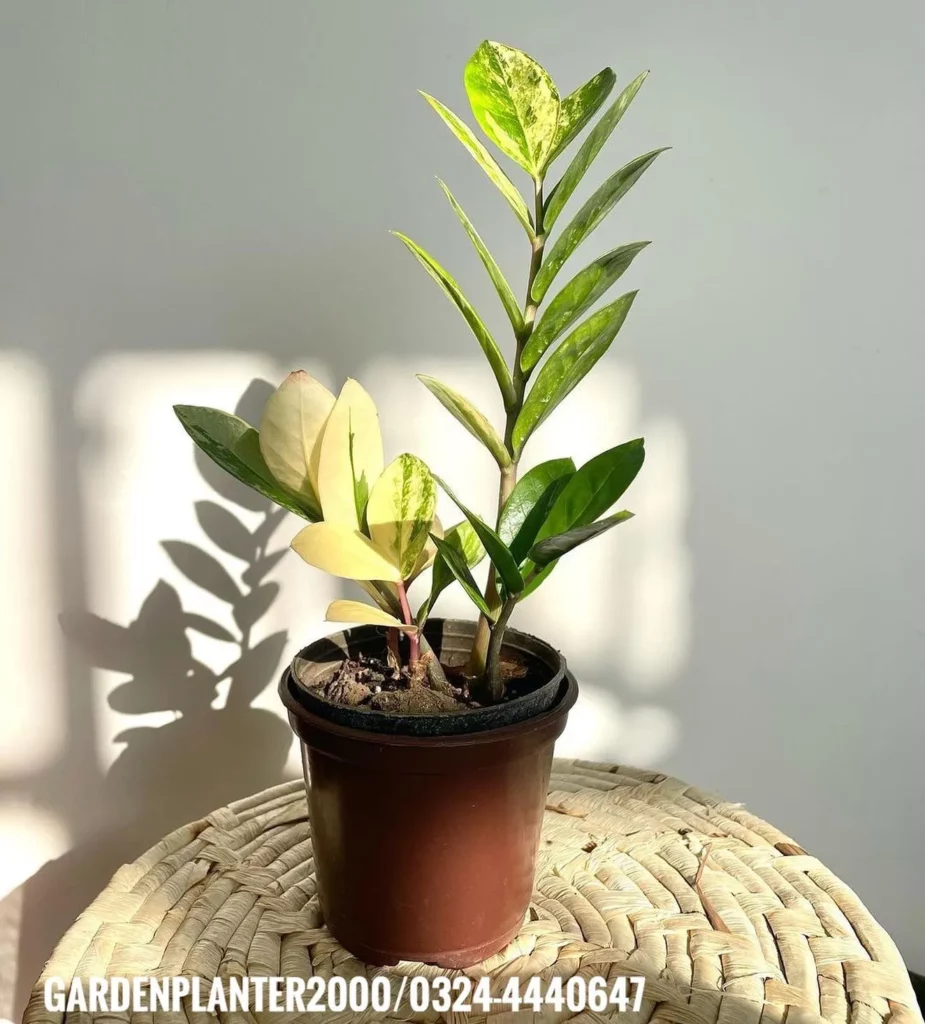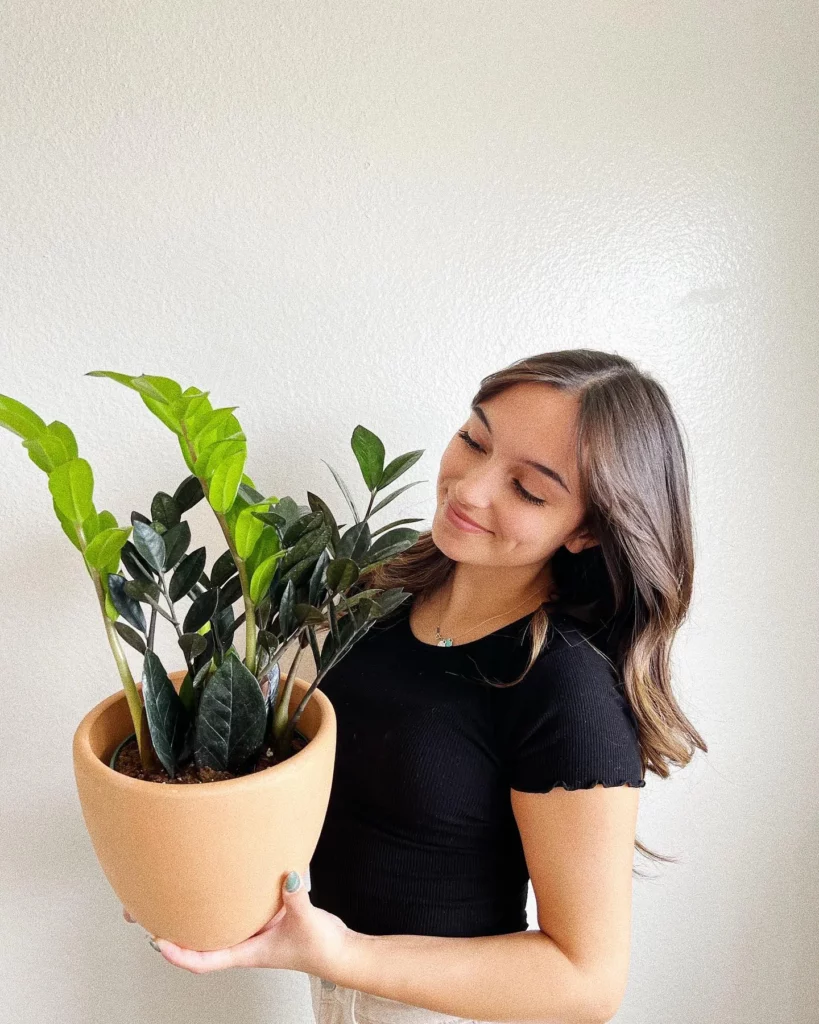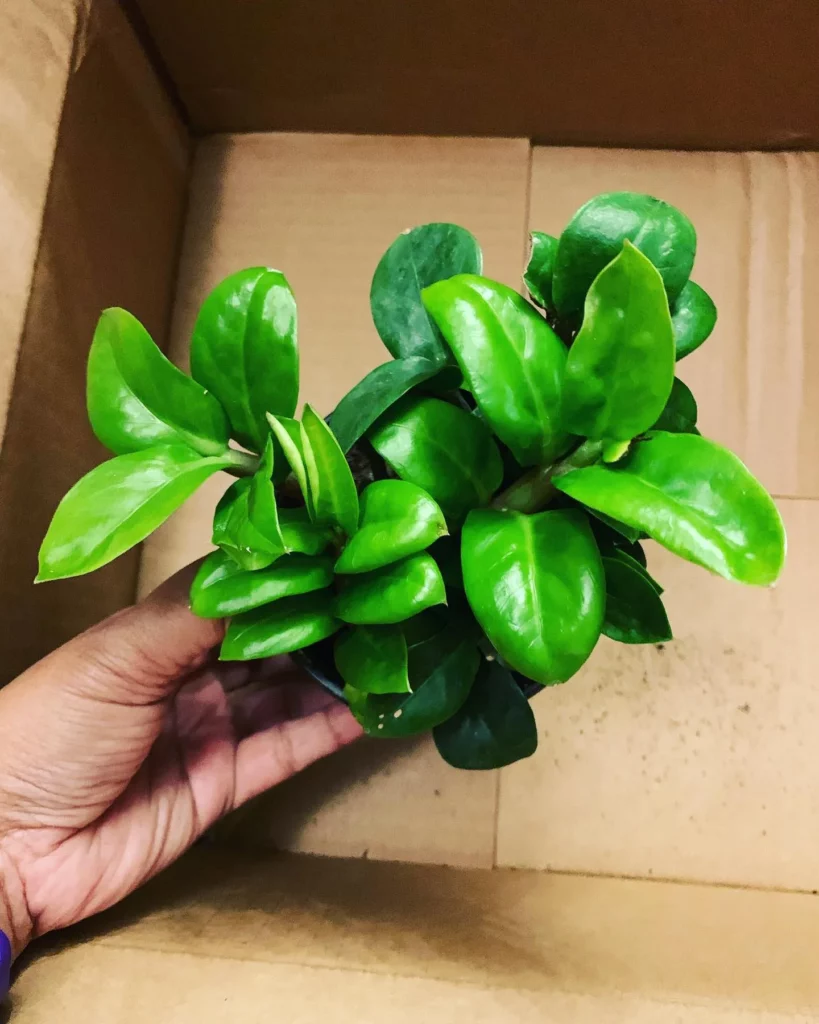Yes, ZZ plants can thrive in low light conditions, making them suitable for environments with minimal natural light.
ZZ plants, also known as Zamioculcas Zamiifolia, excel in low light conditions, making them ideal for spaces lacking natural light. They tolerate fluorescent lighting and shun direct sunlight to prevent stem sunburn.
Renowned for their adaptability, they’re favored for bringing greenery to dim areas, thriving alongside other low-light plants like snake plants, peace lilies, and pothos.
No products found.
ZZ Plant Light Requirements



ZZ plants are unique in that they can tolerate low light conditions and still thrive. They are well-suited for rooms with insufficient natural light or even spaces with no light at all.
Unlike many other houseplants, ZZ plants can survive and grow under fluorescent lighting, making them an excellent choice for offices or rooms with minimal sunlight.
When caring for ZZ plants in low light conditions, it’s important to avoid exposing them to direct sunlight. Too much sun can cause sunburns on their stems, leading to damage and browning.
Instead, place your ZZ plant in a spot where it will receive bright but indirect light, such as near a north-facing window or a few feet away from a bright window.
No products found.
ZZ plants are known for their resilience and ability to store moisture in their stems and roots. This makes them a low-maintenance option, as they can tolerate periods of drought.
When watering your ZZ plant, allow the soil to dry out completely between waterings. Overwatering can lead to root rot and other issues, so it’s best to err on the side of underwatering with ZZ plants.
Best Low Light Houseplants

If you’re looking to add more greenery to your low-light interiors, there are several other houseplants that can thrive in similar conditions as ZZ plants.
These plants are not only beautiful but also have the ability to purify the air and create a calming atmosphere. Let’s explore some of the best low light houseplants:
Snake Plant
The snake plant, also known as Sansevieria, is a popular choice for low-light environments. It has long, upright leaves that come in various shades of green and yellow.
No products found.
Snake plants are known for their air-purifying qualities and can survive in almost any lighting condition, including low light. They are well-suited for bedrooms, living rooms, and offices.
Peace Lily
The peace lily, or Spathiphyllum, is a beautiful flowering plant that thrives in low to medium light conditions. It features dark green leaves and elegant white flowers that bloom periodically.
No products found.
Peace lilies are known for their ability to remove toxins from the air, making them a great addition to bedrooms or areas with limited sunlight.
Parlor Palm
The parlor palm, or Chamaedorea elegans, is a small palm tree that can add a touch of tropical charm to your low-light spaces. With its delicate, feathery leaves, it creates a lush and inviting atmosphere.
No products found.
Parlor palms are tolerant of low light conditions and can thrive in corners or areas away from windows.
Pothos
Pothos, or Epipremnum aureum, is a versatile vine plant that is well-adapted to low light conditions. It has heart-shaped leaves that come in various shades of green, making it a visually appealing addition to any room.
Pothos can be grown in hanging baskets, on shelves, or even as a trailing plant on top of furniture.
Spider Plant
The spider plant, or Chlorophytum comosum, is an easy-to-grow houseplant that can thrive in low light areas. It has long, arching leaves with white stripes that create a vibrant contrast against the green foliage.
No products found.
Spider plants are known for their air-purifying qualities and can be grown in hanging baskets or on shelves.
Cast Iron Plant
The cast iron plant, or Aspidistra elatior, is a tough and resilient plant that can tolerate a wide range of light conditions, including low light. It has dark green, glossy leaves that can bring a touch of elegance to any room.
Cast iron plants are perfect for areas with low light, such as hallways or office spaces.
Dracaena
The dracaena genus includes several plant species that are suitable for low-light environments. Some popular varieties include Dracaena marginata, Dracaena reflexa, and Dracaena fragrans.
No products found.
These plants have long, slender leaves and can tolerate low light conditions. Dracaenas are known for their air-purifying abilities and can be placed in living rooms, bedrooms, or even bathrooms.
Chinese Evergreen
The Chinese evergreen, or Aglaonema, is a popular houseplant known for its ability to thrive in low light conditions. It has large, variegated leaves in shades of green, silver, and sometimes red.
Chinese evergreens are low-maintenance plants and can withstand neglect, making them perfect for those who are new to indoor gardening.
Sedum Morganianum
Sedum morganianum, also known as burro’s tail or donkey’s tail, is a unique and eye-catching succulent that can thrive in low light conditions. It has trailing stems covered in plump, bead-like leaves.
Sedum morganianum is a great choice for hanging baskets or shelves, adding a touch of natural beauty to your low-light interiors.
ZZ Plant Care Guide



Proper care is essential for ZZ plants to thrive and stay resilient in low light environments. These hardy plants are native to Eastern Africa and have become a popular choice for indoor gardening due to their ability to tolerate low light conditions.
Here are some important care tips to help ensure the health and vitality of your ZZ plants:
Light Requirements:
ZZ plants can survive in low light conditions, but they will thrive with a bit more light. Place them in a location with bright, indirect light for optimal growth. Avoid direct sunlight, as it can scorch their leaves.
If your ZZ plant is not receiving enough light, you may notice slower growth and smaller leaf size.
Watering:
One of the great advantages of ZZ plants is that they are drought-tolerant and can go without water for long periods. It’s important to let the soil dry out between waterings to prevent overwatering, which can lead to root rot.
Water your ZZ plant when the top inch of the soil feels dry to the touch. In winter or low light conditions, reduce watering frequency to prevent waterlogged soil.
Soil and Potting:
Use a well-draining potting mix to ensure the proper aeration of roots. A mixture of equal parts potting soil, perlite, and peat moss works well for ZZ plants. Choose a pot with drainage holes to prevent water accumulation.
Repot your ZZ plant every two to three years or when it becomes root-bound.
Fertilizing:
ZZ plants do not require frequent fertilization, but a balanced houseplant fertilizer can promote growth. Feed your ZZ plant once every three to four months during the growing season.
Avoid over-fertilizing, as it can lead to excessive foliage and diminished health.
Other Low Light Plants for Your Home

If you’re looking to diversify your indoor plant collection, here are some other low light plants that can thrive alongside ZZ plants:
- Snake Plant (Sansevieria): Known for its air-purifying properties, the snake plant is a hardy plant that can withstand low light conditions. It has striking upright leaves that come in various patterns and is perfect for adding a touch of elegance to any space.
- Peace Lily (Spathiphyllum): This beautiful plant thrives in low light and is known for its white flowers. It is also an excellent air purifier, making it a popular choice for bedrooms and offices.
- Parlor Palm (Chamaedorea elegans): The parlor palm is a compact plant that can tolerate low light environments. Its lush, green foliage adds a touch of tropical vibes to any room.
- Donkey Tail (Sedum morganianum): With its trailing stems and plump, succulent leaves, the donkey tail is a unique and eye-catching plant. It requires minimal care and can thrive in low light conditions.
Conclusion



ZZ plants are a fantastic choice for low-light interiors, as they are resilient and can thrive in conditions where other plants may struggle.
These plants, scientifically known as Zamioculcas Zamiifolia, are well-suited for rooms with insufficient natural light or even spaces with no light at all. They can tolerate fluorescent lighting and do not require direct sunlight, making them perfect for dimly lit areas.
One of the advantages of ZZ plants is their low-maintenance nature. They can survive without frequent watering, as they store moisture in their stems and roots.
This makes them ideal for those who may forget to water their plants regularly, as ZZ plants can withstand periods of neglect.
In addition to ZZ plants, there are several other low-light plants that can thrive in similar conditions. The snake plant, peace lily, parlor palm, donkey tail, pothos, spider plant, cast iron plant, dracaena, Chinese evergreen, and sedum morganianum are all excellent choices for bringing life to dark corners or areas with limited sunlight.
These plants are adaptable to low-light environments and can add beauty and greenery to your home, even in areas where natural light is scarce.
So, if you have a room or space in your home that lacks natural light, don’t despair. ZZ plants and other low-light houseplants are here to save the day.
With their ability to thrive in low light conditions, they can transform any dim space into a lush and vibrant oasis. Just remember to provide them with occasional care, and they will reward you with their beauty and resilience.
Make sure to check out our article on How To Repot A ZZ Plant Safely?. And after reading that ZZ Plant article, check out our article on Tips To Prevent Pests On ZZ Plant: Dealing With Aphids And Mealybugs.
FAQ
Q: Can ZZ plants thrive in low light conditions?
A: Yes, ZZ plants can thrive in low light conditions. They are well-suited for rooms with insufficient natural light or even spaces with no light at all.
Q: Do ZZ plants require direct sunlight?
A: No, ZZ plants do not require direct sunlight. They can tolerate fluorescent lighting and can even be placed in areas with no natural light.
Q: Can ZZ plants get sunburned?
A: Yes, too much sunlight can cause sunburns on the stems of ZZ plants. It is best to avoid placing them in direct sunlight to prevent this.
Q: Are ZZ plants low-maintenance?
A: Yes, ZZ plants are low-maintenance. They can survive without frequent watering as they store moisture in their stems and roots.
Q: What are some other low-light plants that can thrive in similar conditions?
A: Some other low-light plants that can thrive in similar conditions include the snake plant, peace lily, parlor palm, donkey tail, pothos, spider plant, cast iron plant, dracaena, Chinese evergreen, and sedum morganianum.





